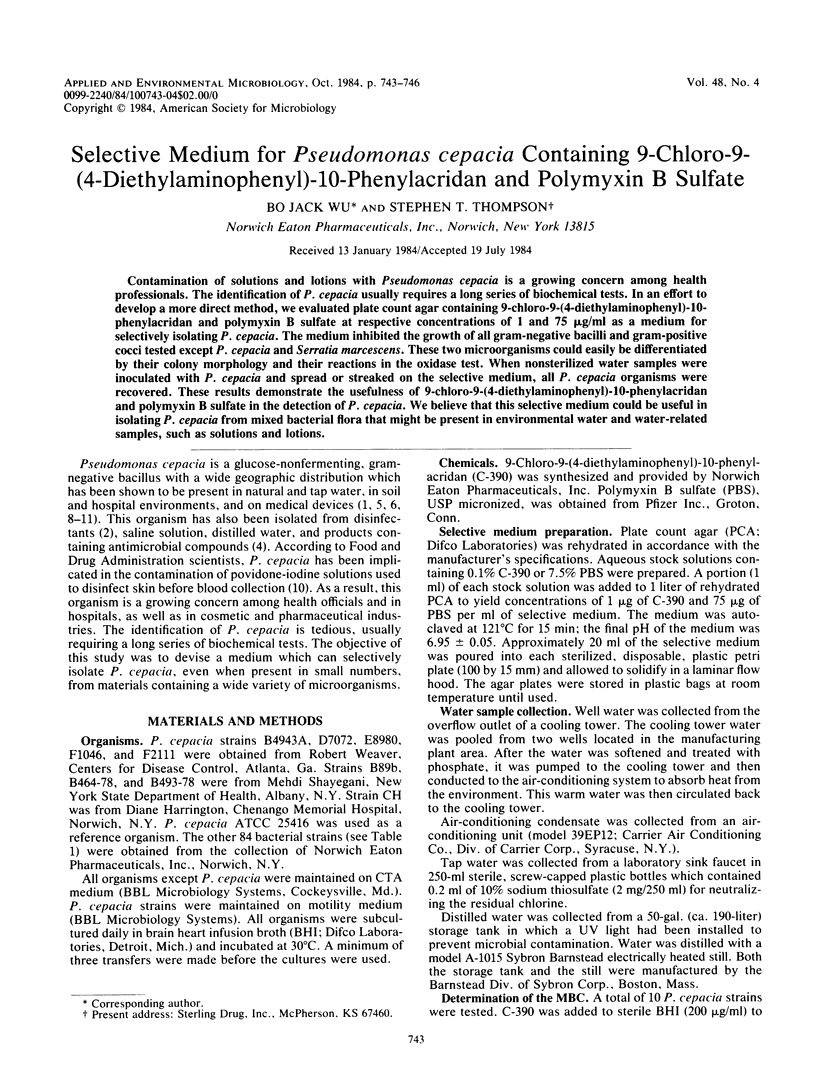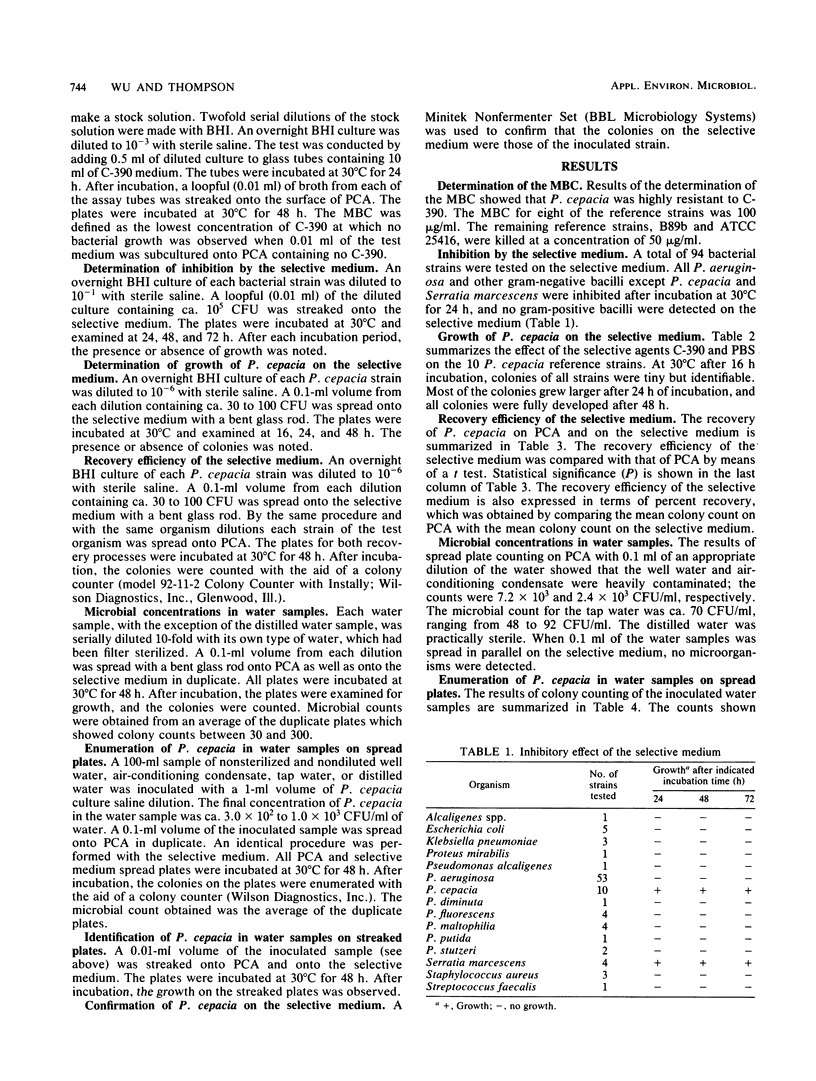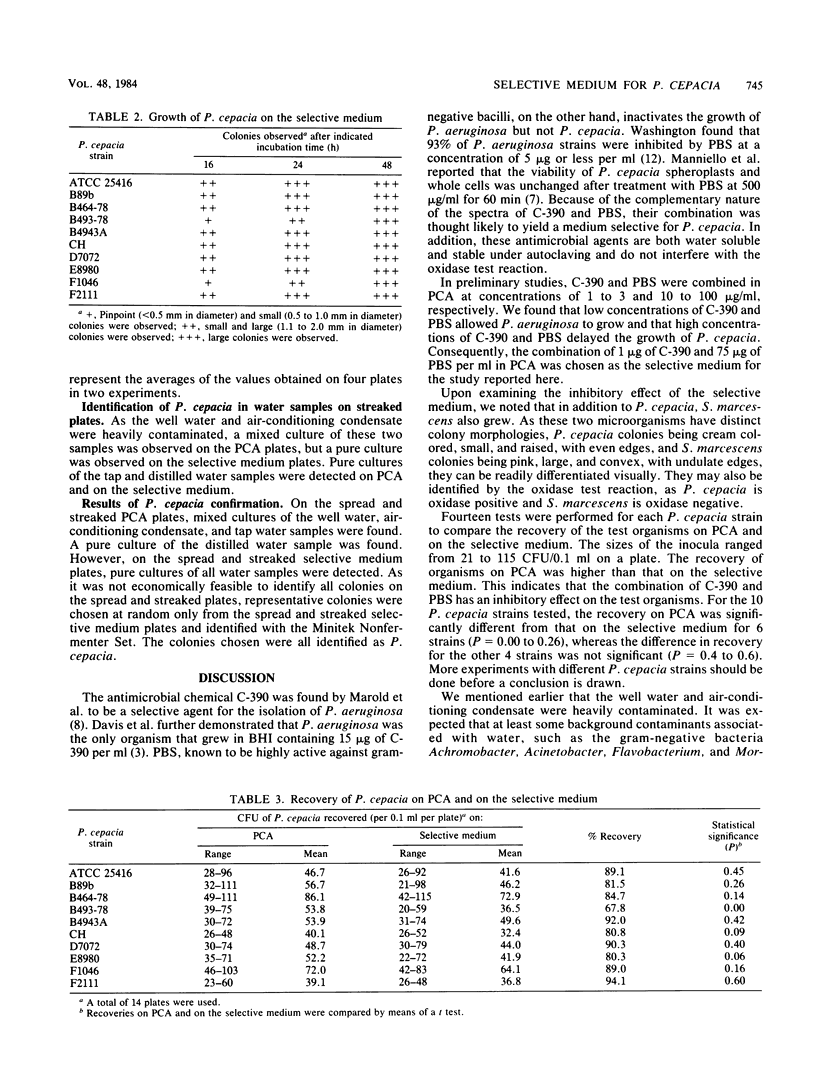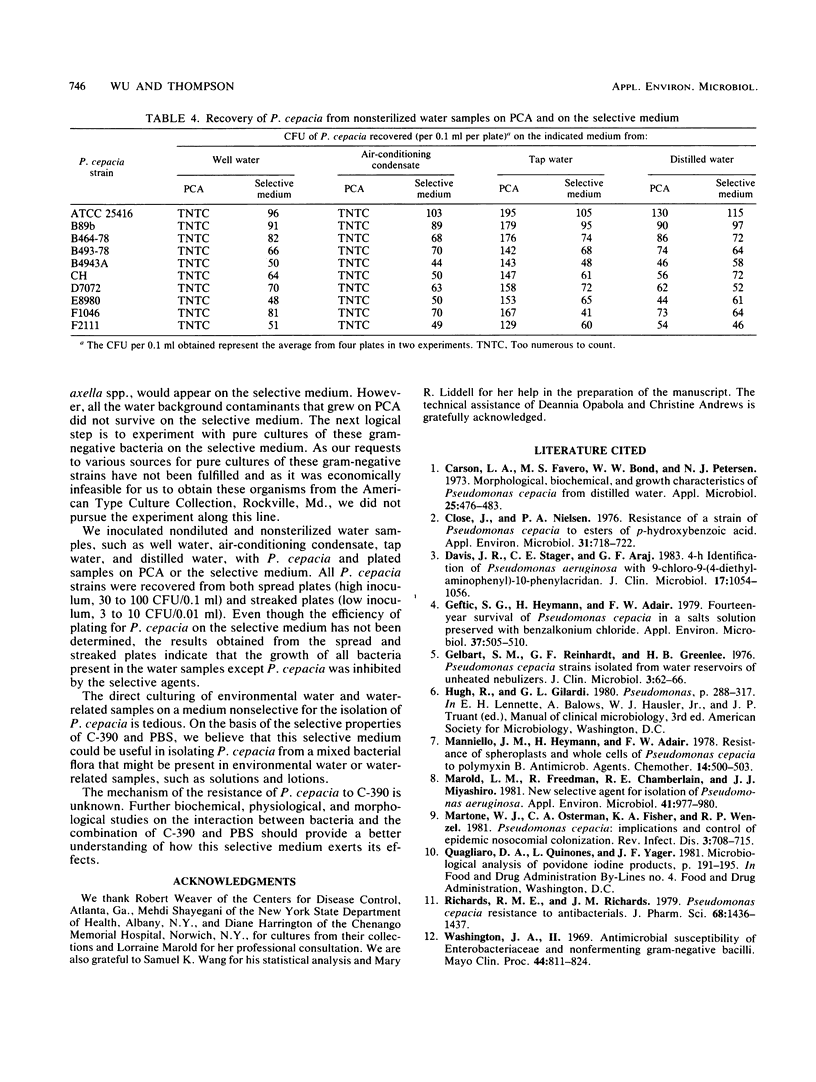Abstract
Contamination of solutions and lotions with Pseudomonas cepacia is a growing concern among health professionals. The identification of P. cepacia usually requires a long series of biochemical tests. In an effort to develop a more direct method, we evaluated plate count agar containing 9-chloro-9-(4-diethylaminophenyl)-10-phenylacridan and polymyxin B sulfate at respective concentrations of 1 and 75 micrograms/ml as a medium for selectively isolating P. cepacia. The medium inhibited the growth of all gram-negative bacilli and gram-positive cocci tested except P. cepacia and Serratia marcescens. These two microorganisms could easily be differentiated by their colony morphology and their reactions in the oxidase test. When nonsterilized water samples were inoculated with P. cepacia and spread or streaked on the selective medium, all P. cepacia organisms were recovered. These results demonstrate the usefulness of 9-chloro-9-(4-diethylaminophenyl)-10-phenylacridan and polymyxin B sulfate in the detection of P. cepacia. We believe that this selective medium could be useful in isolating P. cepacia from mixed bacterial flora that might be present in environmental water and water-related samples, such as solutions and lotions.
Full text
PDF



Selected References
These references are in PubMed. This may not be the complete list of references from this article.
- Carson L. A., Favero M. S., Bond W. W., Petersen N. J. Morphological, biochemical, and growth characteristics of pseudomonas cepacia from distilled water. Appl Microbiol. 1973 Mar;25(3):476–483. doi: 10.1128/am.25.3.476-483.1973. [DOI] [PMC free article] [PubMed] [Google Scholar]
- Close J. A., Neilsen P. A. Resistance of a strain of Pseudomonas cepacia to esters of p-hydroxybenzoic acid. Appl Environ Microbiol. 1976 May;31(5):718–722. doi: 10.1128/aem.31.5.718-722.1976. [DOI] [PMC free article] [PubMed] [Google Scholar]
- Davis J. R., Stager C. E., Araj G. F. 4-h Identification of Pseudomonas aeruginosa with 9-chloro-9-(4-diethylaminophenyl)-10-phenylacridan. J Clin Microbiol. 1983 Jun;17(6):1054–1056. doi: 10.1128/jcm.17.6.1054-1056.1983. [DOI] [PMC free article] [PubMed] [Google Scholar]
- Geftic S. G., Heymann H., Adair F. W. Fourteen-year survival of Pseudomonas cepacia in a salts solution preserved with benzalkonium chloride. Appl Environ Microbiol. 1979 Mar;37(3):505–510. doi: 10.1128/aem.37.3.505-510.1979. [DOI] [PMC free article] [PubMed] [Google Scholar]
- Gelbart S. M., Reinhardt G. F., Greenlee H. B. Pseudomonas cepacia strains isolated from water reservoirs of unheated nebulizers. J Clin Microbiol. 1976 Jan;3(1):62–66. doi: 10.1128/jcm.3.1.62-66.1976. [DOI] [PMC free article] [PubMed] [Google Scholar]
- Manniello J. M., Heymann H., Adair F. W. Resistance of spheroplasts and whole cells of Pseudomonas cepacia to polymyxin B. Antimicrob Agents Chemother. 1978 Sep;14(3):500–504. doi: 10.1128/aac.14.3.500. [DOI] [PMC free article] [PubMed] [Google Scholar]
- Marold L. M., Freedman R., Chamberlain R. E., Miyashiro J. J. New selective agent for isolation of Pseudomonas aeruginosa. Appl Environ Microbiol. 1981 Apr;41(4):977–980. doi: 10.1128/aem.41.4.977-980.1981. [DOI] [PMC free article] [PubMed] [Google Scholar]
- Martone W. J., Osterman C. A., Fisher K. A., Wenzel R. P. Pseudomonas cepacia: implications and control of epidemic nosocomial colonization. Rev Infect Dis. 1981 Jul-Aug;3(4):708–715. doi: 10.1093/clinids/3.4.708. [DOI] [PubMed] [Google Scholar]
- Richards R. M., Richards J. M. Pseudomonas cepacia resistance to antibacterials. J Pharm Sci. 1979 Nov;68(11):1436–1438. doi: 10.1002/jps.2600681127. [DOI] [PubMed] [Google Scholar]
- Washington J. A., 2nd Antimicrobial susceptibility of enterobacteriaceae and nonfermenting gram-negative bacilli. Mayo Clin Proc. 1969 Nov;44(11):811–824. [PubMed] [Google Scholar]


